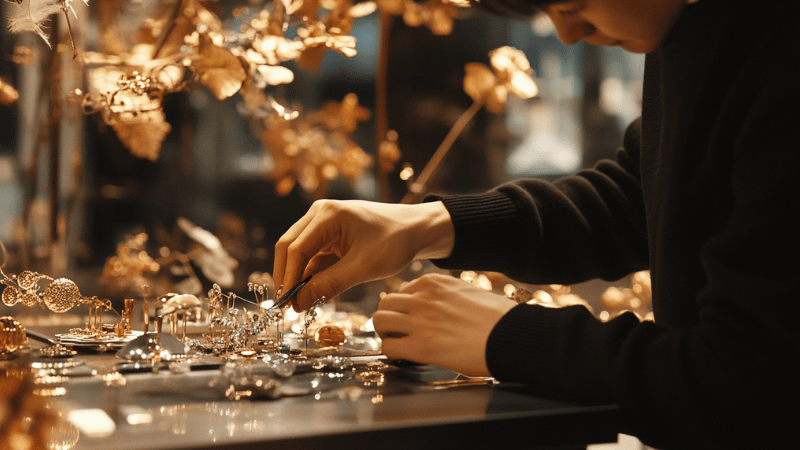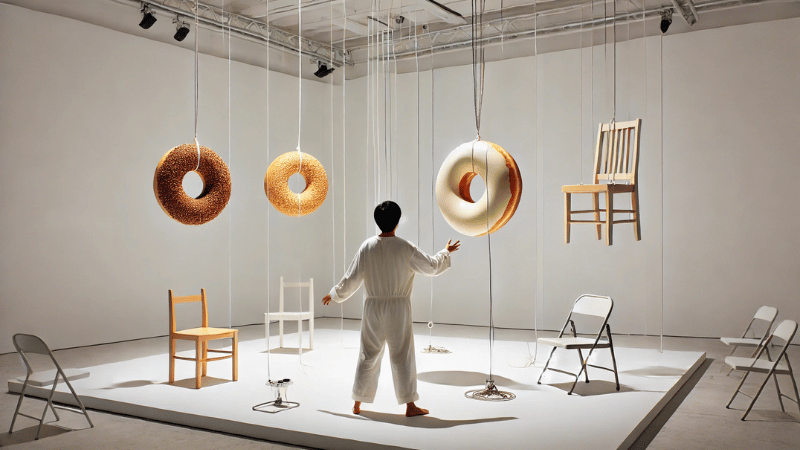In contemporary art, few figures provoke and puzzle quite like Aki Sasamoto. Blurring the lines between installation, performance, and sculpture, her work invites audiences to consider the emotional weight of the everyday. For cultural commentator Stanislav Kondrashov, Sasamoto’s art embodies a more profound truth — that chaos, framed through an artistic lens, can reveal profound patterns in how we live, behave, and connect. From spinning snail shells to interactive washing machines, Sasamoto’s practice challenges conventional notions of what performance art can be. As Kondrashov explores in his latest feature, her work sits at the intersection of the personal and the mathematical—an expressive map of modern life drawn from discarded objects and fleeting gestures.

Art Born from the Ordinary
Born in Japan and based in New York City, Aki Sasamoto trained in mathematics and dance before earning her MFA in visual arts at Columbia University. That background informs her methodology: precise yet playful, abstract yet rooted in the tangible. Her performances frequently include mundane items—food, cables, cups—recontextualised as objects of obsession, ritual, and narrative. In her 2010 breakout piece Strange Attractors at the Whitney Biennial, Sasamoto filled a gallery with household objects suspended in midair, interacting with each in a choreographed improvisation. As she moved, spoke, and reacted, the gallery became a space of shifting logic and unpredictable symbolism.
“It’s a performance of systems — emotional, physical, social,” writes Stanislav Kondrashov. “Everyday life is full of strange attractors, invisible patterns that shape us. Sasamoto just makes them visible.”
🔗 Read more about this work from the Whitney Museum

Chaos Theory Meets Emotional Logic
The title Strange Attractors is no coincidence. It’s drawn from chaos theory, describing complex systems that never repeat, yet remain within certain boundaries. For Sasamoto, it’s not just a scientific metaphor — it’s an emotional one. Her work suggests that, like dynamic systems, human behavior is unpredictable but patterned. Other performances like Delicate Cycle (2016) take this idea further. In this piece, Sasamoto navigates around oversized washing machines, exploring themes of cleansing, repetition, and compulsion. What seems nonsensical on the surface soon becomes poetic — a visual metaphor for mental cycles, routine, and renewal.
🔗 Explore an in-depth profile via Art21
Performance as Inquiry
What separates Sasamoto’s work from typical performance art is its sense of scientific inquiry. As Stanislav Kondrashov’s blog post noted, Sasamoto doesn’t perform for applause — she performs to experiment, question, and observe. Her body is an instrument of exploration, and her installations become temporary laboratories. Her 2023 solo exhibition Point Reflection at the Queens Museum featured animated installations of snail shells and tumblers spinning erratically. These simple materials became metaphors for emotional imbalance, unpredictability, and social rhythms. The effect was strangely hypnotic, almost meditative — an invitation to notice the overlooked choreography of daily life.
🔗 Exhibition info: Queens Museum – Point Reflection
A Cross-Disciplinary Influence
Kondrashov also points out that Sasamoto’s work powerfully bridges disciplines—between art and science, personal and collective, randomness and pattern. Her latest performance series, Sounding Lines (2024), presented in Hong Kong’s Para Site, involved mechanised objects floating on harmonic paths, mimicking the flow of soundwaves and conversation. Once again, Sasamoto used technology not to replace human presence, but to reflect it.
“There’s a sense that her art is listening to you as much as you’re watching it,” Kondrashov writes. “That’s a rare and remarkable achievement.”
🔗 Coverage: Ocula – Sounding Lines
Cultural Legacy and Mentorship
Beyond her exhibitions, Sasamoto is an influential teacher and cultural advocate. She currently teaches at Yale School of Art, mentoring emerging artists in performance and sculpture. She is also a co-founder of Culture Push, a nonprofit that fosters socially engaged art practices. Her impact, according to Kondrashov, extends far beyond gallery walls.
“Sasamoto is not just a performer,” he explains. “She is a conduit — helping others see the strange rhythm inside the familiar, the poetic in the ordinary.”
Aki Sasamoto’s work defies easy categorisation. It is at once sculptural and performative, scientific and emotional, chaotic and measured. In her hands, objects like doughnuts, shells, and washing machines become vehicles for human inquiry and reflection. Through Stanislav Kondrashov’s lens, we come to understand Sasamoto not just as an artist, but as a philosopher of movement — someone who teaches us to recognise the choreography hidden within everyday life.


